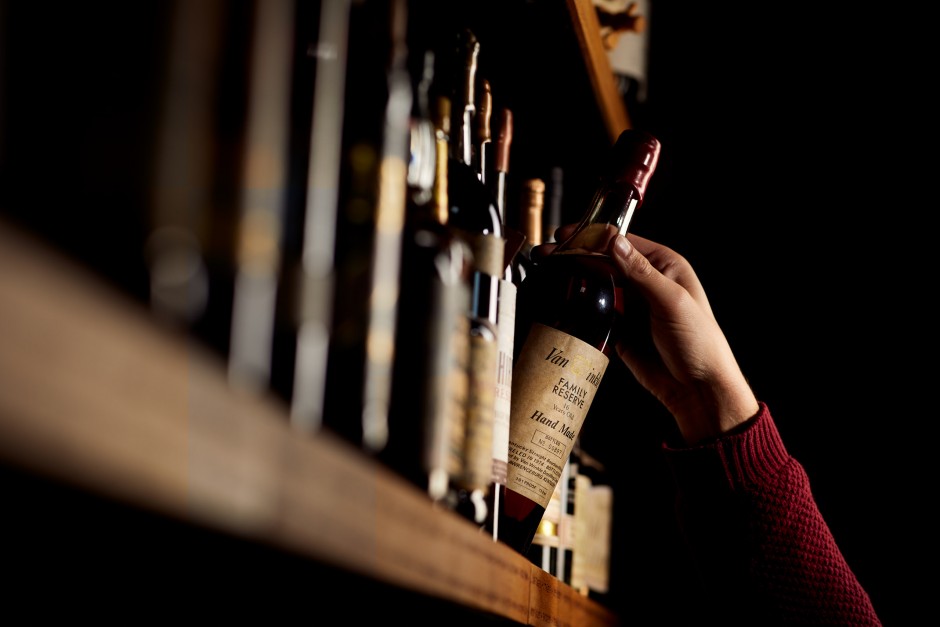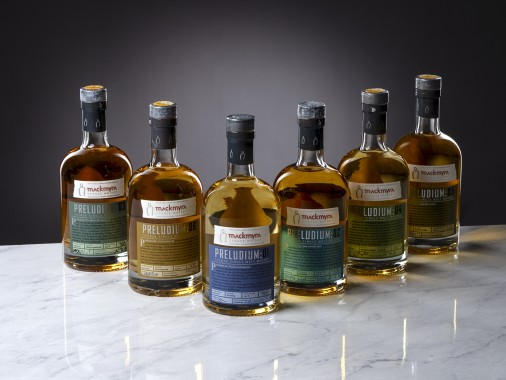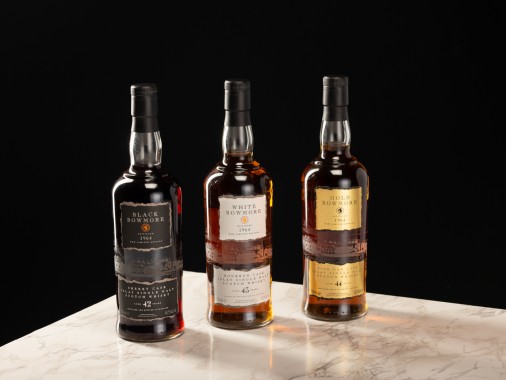 An Expert Guide to Collecting American Whiskey
An Expert Guide to Collecting American Whiskey Bourbon and American whiskeys have been admired by avid enthusiasts for decades. No longer considered just a liberating libation, but a collector’s item or even potential investment, the value of these whiskey bottles has explosively risen year-on-year, giving birth to a growing legion of “dusty hunters”. In other words, the popularity of American whiskey is nothing new, however its status alongside its Scotch counterpart in the collecting world and secondary market, certainly is.
In 2020, we hosted our first exclusive American whiskey auction, the ‘Heart and Soul’ of Pat’s Whisk(e)y Collection, which secured mass interest across the globe and broke auction estimates to achieve an overall hammer price of $485,625 (£375,000).
And this interest in American whiskey shows no sign of slowing down - Whisky Auctioneer has recorded a 600% increase in the volume of whiskeys from the USA featuring in its auctions between 2016 and 2020, with value increasing by over 900% in the same time period. With whiskey becoming one of the hottest segments in the secondary whisky market, I’ve asked our Head Curater & Spirits Specialist, Joe Wilson, to give us some advice us on what collectors are looking for.
Pre-Prohibition and Prohibition-Era Bourbon
2020 marked a century since the United States implemented Prohibition – an era that would become one of the most culturally and historically significant moments in American history.
Among bourbon collectors, prohibition whiskeys are considered bourbon legends. The extraordinary appeal of these bottles is held in their status as irreplaceable cultural artefacts and unique historical objects. They are also finite, and each with fascinating individual, and collective, stories to tell. Our Century of American Whiskey Auction featured the largest collection of Prohibition-era whiskey to be offered at an auction outwith the United States.
“Overholt” rye whiskey distilled at the Broad Ford distillery, Pennsylvania in 1908 - the same year in which the 700-pound New Year’s Eve ball made its maiden descent from the flagpole atop the New York Times building.
Many of the whiskeys from before Prohibition occasionally found on the secondary market today are more often than not from the private reserves of individuals who stockpiled it spotting Prohibition on the horizon. Today these examples are fascinating artefacts that quite literally offer the opportunity to imbibe a piece of history.
Many distilleries fell victim to the Prohibition Act of 1920 when it came into effect, but it didn’t shutter every distillery. Six companies applied for and received licenses to sell “medicinal spirits”, all bottled-in-bond at 100 proof.
I asked Joe Wilson about the collectibility of Prohibition whiskeys,
As the only legal outlet to acquire genuine whiskey in 1920s America, it is miraculous that any medicinal pints from the Prohibition era remain unconsumed. Fortunately, changing tastes in the early 1930s mean that many have been. Historical relics in their own right, they also often represent the saviour of some of today’s best-loved and sought-after brands, like I.W. Harper, Old Grand-dad and Old Overholt. These bottles have always been hugely collectible, but now more so than ever as the interest in and demand for rare and vintage American whiskey continues to grow.
Examples of Prohibition whiskeys from The Century of American Whiskey auction.
America’s Big Four Distilling Companies
In 1933, the 21st Amendment was ratified, and Prohibition ended at last. As the decades of recovery followed, four companies emerged from the wreckage that the industry was left behind in – National Distillers, Seagram, Schenley Industries and Hiram Walker.
> Read More - From The Ashes: America's Distilling Giants
Creating some of the earliest bourbon brands, these companies set the stage for some of bourbon’s most popular household names. Fledgling expressions distilled in their early innings offer the ultimate booze cabinet of curiosity for whiskey enthusiasts.

Brands like Four Roses and the Olds: Grand-dad, Crow and Overholt have some of the most storied legacies in American whiskey, and with that comes important and often fascinating lost eras of production. Thankfully produced and exported globally in huge numbers, there is ample opportunities for collectors to own and sample historic versions of each, often showcasing discontinued products and even whiskey from long-closed distilleries.
Joe Wilson, Head Curator & Spirits Specialist
> View National Distillers, Seagram, Schenley Industries and Hiram Walker Timelines
Stitzel-Weller
The most coveted and highly prized whiskey by collectors today is that distilled at the mythical Stitzel-Weller distillery.
The distillery was first opened on Kentucky Derby Day in 1935 by the legendary Julian ‘Pappy’ Van Winkle, Sr. who originally shared ownership with Arthur Philip Stitzel and Alex T. Farnsley, before becoming sole owner in 1942. The Van Winkle family did not simply produce bourbon for +30 years at the distillery, but continually produced what is now the most lusted-after bourbon in the world. Stitzel-Weller had four core brands: W.L Weller, Old Fitzgerald, Rebel Yell and Cabin Still, all of which were prized assets and the Stitzel-Weller era versions of these labels are scrambled after by collectors on the secondary market today.
However, there is one name that is more synonymous with collectible bourbon than any other, and that's Pappy Van Winkle. The famous Pappy Van Winkle range was introduced by Julian Van Winkle III in 1994 in homage to his grandfather, using well-aged barrels from the Stitzel-Weller distillery the now-legendary figure once so lovingly ran.
Examples of the famous Pappy Van Winkle bottles, regularly available in Whisky Auctioneer's auctions.
> Read More - American Icons: The Pursuit of Pappy Van Winkle
And it’s allure is only becoming more desirable by the day - as demonstrated in a new Netflix documentary “Heist”, which covers the infamous theft of highly valuable Pappy Van Winkle bottles worth half a million dollars.
Willett Family Estate
Offering a smorgasbord of exceptional single barrel bourbon and rye selections, Willett Family Estate have developed a first-rate reputation for their quality and generated a fanatic following from whiskey enthusiasts.
Willett’s output has garnered coveted status among whiskey collectors. Not only have their older bourbon selections gained a legendary reputation for their flavour, each expression benefits from the cachet of its rarity. Each individual release is limited to just one cask, only a few hundred bottles, which in perspective is approximately 20 times fewer bottles than Pappy Van Winkle.
The desirability of their expressions also lies in the mystery that surrounds the sourcing of their bourbon, Joe Wilson explains,
The Willett Family Estate are iconic releases. They command not only reverence for their flavour, but importantly add a new dimension to the world of collectible independently bottled bourbon, which can often seem dominated by names like Van Winkle and Stitzel-Weller. While some of the bottles likely do contain bourbon from the latter, they also open up the market to a world of exceptional well-aged whiskey from historic distilleries like Bernheim and Heaven Hill, as well as younger offerings from new producers, including the much-lauded early batches of rye whiskey from MGP in Indiana.

Examples of Willett Family Estate single barrel bourbons
Heaven Hill
Heaven Hill was established by five brothers from the Shapira family following the repeal of Prohibition in the 1930s. Today, the company is now America's largest independent, family-owned premium spirits producer. They are recognised for having preserved many of America’s best-loved labels, such as Old Fitzgerald and Pikesville.
> Read More - Distillery In The Spotlight: Heaven Hill
Popular examples of highly sought-after "pre-fire" Heaven Hill bourbons and ryes distilled at their original Bardstown distillery
Their own creations are no less important, however, and have always featured on the radar of savvy collectors. In particular, examples of ‘Old Heaven Hill’ which were distilled before the distillery’s legendary 1996 fire are the most desirable on the secondary market. The fire received wide-spread notoriety because of its destruction (destroying some 90,000 barrels of whiskey). Despite the intense devastation, some of their limited stock survived and a portion has emerged over the years in limited edition bottlings.
Seismic moments in whisky history, tragic or otherwise, so often beget collectability and this was certainly the case at Heaven Hill. The fire that ravaged its Bardstown distillery in 1996 enshrined its output to that point with a new never-to-be-repeated status, one that has truly captured the imagination of the modern-day collector as the since rehomed Heaven Hill has only continued to cement its reputation as one of Kentucky’s most celebrated distillers.
Joe Wilson, Head Curator & Spirits Specialist
Pre-fire Heaven Hill is clearly, most definitely, undeniably on many bourbon collector's wish lists. Joe Wilson also explains that some of the most sought-after packages of this are bottled under the distillery's very first label "Bourbon Valley" (introduced in 1937), early single cask releases of Evan Williams and examples within the Parker's Heritage Collection containing old Heaven Hill liquid.











